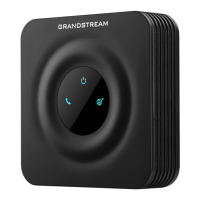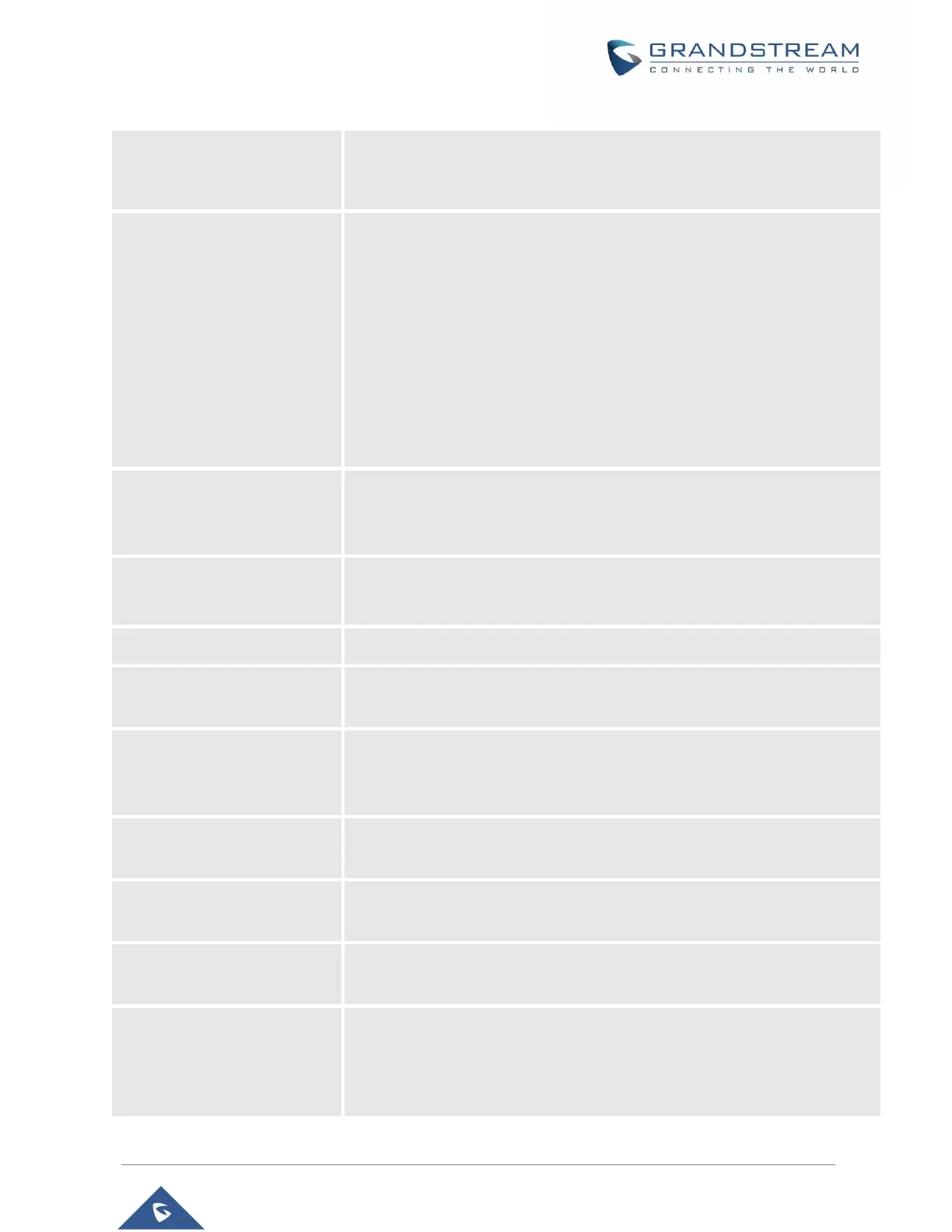HT801/HT802 Administration Guide
Version 1.0.13.7
• The admin password if no SIP account is configured on the HT.
• With the credentials of the SIP account if configured on the ATA.
Defines T1 timeout value.
It is an estimate of the round-trip time between the client and server
transactions.
For example, the HT801/HT802 will attempt to send a request to a SIP
server.
The time it takes between sending out the request to the point of getting a
response is the SIP T1 timer. If no response is received the timeout is
increased to (2*T1) and then (4*T1). Request re-transmit retries would
continue until a maximum amount of time defined by T2. Default is 0.5
seconds.
Identifies maximum retransmission interval for non-INVITE requests and
INVITE responses. Retransmitting and doubling of T1 continues until it
reaches T2 value. Default is 4 seconds.
Configure the SIP Timer D defined in RFC3261. 0 - 64 seconds.
Default is 0
Defines payload type for DTMF using RFC2833.
Preferred DTMF method (in
order)
Sorts DTMF methods (in-audio, via RTP (RFC2833) or via SIP INFO) by
priority.
Allows to adjust the inband DTMF duration sent from ATA to IPPBX.
Default is 100 ms. Valid range: 40-2000 ms.
Inter-duration: 50 ms. Valid range: 40-2000 ms.
Uses above DTMF order without negotiation.
Default is No.
Generate Continuous
RFC2833 Events
When enabled the RFC2833 events are generated until key is released.
Default is No.
If set to yes, flash will be sent as DTMF event.
Default is No.
When it set to YES it allows the user to perform some call setting when
both channels are used while pressing:
• "Flash + 1" in order to hang up the current call and resume a call that
was held.

